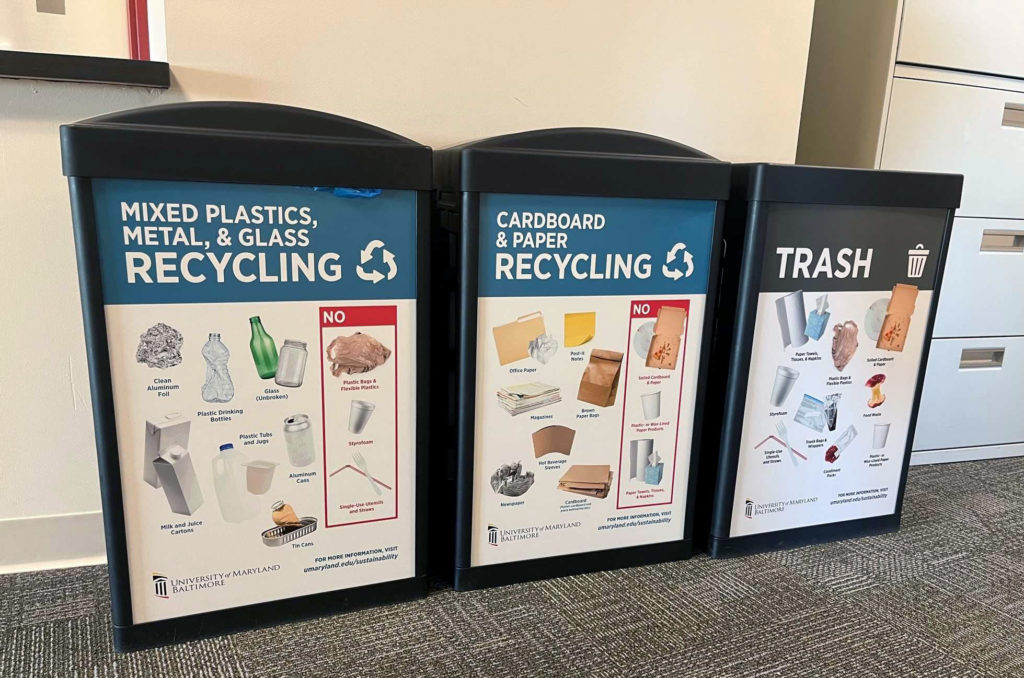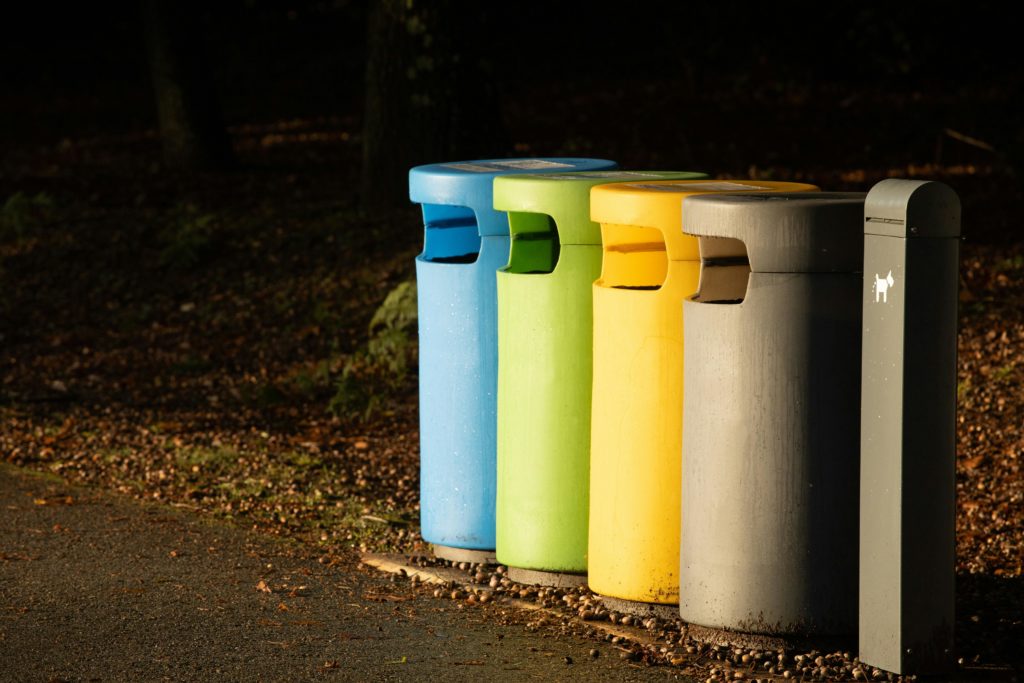Photo by Tom Fisk
There is a looming crisis. We are running out of landfill space.
Did you know that we average almost five pounds of garbage per person in the United States per day?
The U.S. represents four percent of the world’s population but contributes to 12 percent of Earth’s trash. Our country recycles and composts roughly one-third of its waste, meaning that two-thirds of it is either landfilled (the majority), repurposed, or combusted.
What does this mean for landfill space? The answer depends on location. Some states can utilize current landfill operations for several decades, while others may run out of landfill capacity within five to ten years.
Central Stations to the Rescue
What can your campus or school district do to help mitigate the waste crisis and save the planet? It turns out, a lot.
Waste collection, disposal, and management are hot topics for facility managers in educational institutions today. Recent legislation, ongoing sustainability initiatives, and even operational efficiencies are all contributing to this trend.
The schools scoring the biggest sustainability wins and cost savings use a simple but highly effective method: a centralized, self-service waste model.
This article will explore how facility managers can utilize centralized waste initiatives to save our landfills—one trash can at a time.
Bin There, Done That
The traditional waste collection model for educational facilities involves the daily removal of waste from containers in office spaces (deskside bins) and classrooms. This model prioritizes the convenience of the building occupant. A faculty member or student can simply dispose of trash or recyclables without even leaving their chair, confident that the custodial team will empty the bins that same evening.
While this model certainly makes it easy to discard our waste, there are several serious problems that combine for costly and unsustainable outcomes:
- Increased Recycling Contamination: We all have the potential to be lazy. When a busy individual can decide in the privacy of their office or cubicle whether to spend the effort to recycle a particular item, there is a much higher chance that the recyclable item will be discarded in the trash receptacle. This issue is even more prominent when the trash bins are more conveniently located than the recycle bins (for example, when deskside trash bins are present, but recycle containers are only centrally located).
- Wasted Liners: To provide optimal service and to reduce odor and pest issues, custodians often replace liners each time the waste is collected. For facilities with many deskside office bins, this means that hundreds of liners may be replaced each night. These plastic liners are added to the landfill stream, and the facility manager must always keep a large stock of liners. Experts estimate that plastic bags can take anywhere from 20 to even 1,000 years (depending on the type of plastic) to fully decompose in the landfill.
- Inefficient Labor: Custodians spend a considerable amount of time collecting and transporting waste. For example, in APPA’s most recent Custodial Operational Guidelines for Educational Facilities, daily trash collection in offices is specified for APPA levels one, two, and three, taking 4.37 minutes per 1,200 square feet. In a larger campus that may have hundreds of thousands of square feet of office space, custodians may be spending 16 to 48 hours every day (the equivalent of two to six FTE’s) on waste removal.
- Lack of Community Ownership: When waste bins are not centralized, discarding trash becomes an individual rather than a communal act. This misses an important educational and community-building opportunity, leading to a “it’s not my problem” mentality among the building occupants.
Centralized Waste Collection—What Is It?
Centralized waste collection refers to a waste management program that eliminates deskside trash and recycle bins throughout the office areas in favor of larger centralized waste containers strategically placed throughout the building’s higher-traffic areas. In this program, the facility occupants carry their trash, recyclables, and even compost to these centralized, nearby locations. Some programs even involve the permanent removal of waste containers within individual classrooms.
The central waste stations usually include two to four containers, depending on the space and the community’s recycling program. The most common container types are
- Landfill (trash),
- Paper and cardboard,
- Mixed recycling (plastic, metal, and glass) and compost.
Modern central stations are well-designed, strategically placed, aesthetically pleasing, and chosen to integrate or blend with the surrounding finishes. They often include signage to educate the building occupants on proper bin selection, depending on the type of waste being discarded.

Photo credit: The Elm, University of Maryland, Baltimore
One Solution, Many Benefits
By implementing this simple but powerful change, facility managers can achieve huge benefits that go far beyond sustainability.
- Increase Recycling Rates: The most important benefit is the positive impact on the environment. Studies repeatedly show that centralized waste is one of the most impactful ways to divert waste from landfills since it results in much higher occupant participation in proper recycling. Case study: A prominent, private university on the west coast recently transitioned to a central waste model with the goal of achieving “Zero Waste,” defined as 90 percent diversion from landfills or higher, by 2030.
- Reduce Plastics: Organizations that centralize their trash programs no longer need to purchase plastic liners for the thousands of deskside bins. Consumable supply costs decrease, and the organization creates less plastic waste. Case study: The University of Maryland—Baltimore estimates it will reduce the number of individual can liners by 775,170 annually across its 36 participating facilities.
- Improve Occupant Wellness: By regularly taking trash, recycling, and food to central bins, building occupants develop healthier movement and break patterns throughout the day (short, walking breaks) and are more likely to engage with coworkers in healthy, face-to-face ways. As an added benefit, custodians have fewer touch points and bending patterns, improving their safety and well-being.
- Save Money: The organization saves on custodial costs since less cleaning labor is needed for trash and recycling pickup. That labor can be redistributed toward more important tasks, like keeping first-impression areas clean and well-stocked.
- Beautify the Space. Deskside and scattered waste receptacles can create a sloppy, unkempt look, especially in dense office and cubicle areas. Facility Managers are often surprised at these spaces’ clean, uniform feel after the small bins are removed.
- Shift the Paradigm. Centralized waste processes create a community-based approach to waste management. Each student, faculty member, and visitor inevitably becomes a more educated consumer and steward of waste.
- Fewer Pest Issues. Consolidating waste usually reduces pest-related issues. Food waste is often deposited into deskside bins, and if those bins are not emptied regularly, they often attract rodents.
Why Hybrid Programs Often Fail
Sometimes, facility managers will push back on a 100 percent conversion to centralized bins. Why can’t communal waste stations be implemented in addition to deskside bins?
The main problem with this hybrid approach is that it does not lead to the behavioral changes necessary to drastically improve recycling rates. If a busy professor or faculty member still has the option of using a deskside bin, they will often continue using it, and poor recycling habits will prevail.
Custodial programs that reduce deskside waste collection to once per week (APPA Level Five) or even only upon request will continue to experience building occupants using their deskside bins out of convenience or habit. In these cases, custodians must continue to monitor all the deskside bins for smelly or unsightly food waste (even if the formal “program” is weekly or non-existent deskside waste removal). And well-meaning custodians will be tempted to service the offices more frequently than the specification requires out of helpfulness and good customer service.
A hybrid model, although well-intentioned, often leads to inefficient labor deployment, limited behavioral changes, minimal environmental improvement, and ongoing pest concerns.
Join the Growing Trend
Centralizing waste stations is not a new concept. Researchers point to the provincial government of Ontario, Canada as the originators of this trend. As part of the “Max Green” program, the government switched to a “self-service” waste model where custodians no longer collected deskside waste, and instead, the occupants were given “mini bins” to transport their own waste to central waste containers. Ontario reduced waste by 75 to 95 percent and saved nearly $1 million annually.
In the United States, this trend initially gained momentum in the first decade of the new millennium, coinciding with the rise in popularity of the U.S. Green Building Council’s LEED rating system and the popularizing of other environmental initiatives.
While the trend first gained traction with government and office buildings, higher education and K-12 schools soon followed. For example, in 2009, the University of Vermont made news by switching to a self-service waste model, like the one implemented by the province of Ontario.
Today, hundreds of schools and campuses are rethinking how waste is collected, transported, and tracked, and many have already switched to a fully centralized program. For example, in a recent waste survey sent to a sampling of our customers (a mix of private and public universities and colleges), 36 percent have implemented a completely centralized waste program, 28 percent have a hybrid program (waste is collected centrally, but trash is also collected deskside), and 36 percent have not formally implemented a centralized waste strategy.

Image credit: Simão Moreira, Pexels
Six Steps to Implement a Successful Centralized Waste Program
Removing the deskside waste containers from faculty, staff, and student workers can result in significant pushback. In our custodial consulting practice, we have learned of many campuses that tried—and failed—to implement this program.
Why would a program of such objective, measurable environmental improvements fail? The most common reasons are leadership bowing to upset customers and poor communication. Below are some foundational steps to help facility managers address these issues and successfully launch a self-service, centralized waste program.
1. Establish Leadership Buy-In: Ideally, the president of the institution is 100 percent committed to the new program, its purpose, and is ready to promote it. There will be persuasive complaints when you remove the deskside bids of busy faculty members. Strong, cohesive leadership (at the highest levels of the institution) is needed to sympathize with the complaints yet continue with the new program.
2. Audit and Plan: Before switching to a new waste collection model, an assessment and baseline of the current model must be performed. How much waste is diverted from landfills today? What are the primary goals for switching? How will success be measured? What type and quantity of central waste bins are needed, and where? Will composting be added to the process? Keep in mind that people with disabilities may need an accommodation for the deskside waste collection.
3. Communicate, Communicate, Communicate: Other than the lack of total leadership buy-in, communication breakdown is the most common reason waste initiatives fail. Here are some communication tips that will help a waste initiative succeed:
- Identify every stakeholder that will be affected by this change and develop a communication strategy that addresses each unique need. This will include facility operations, sustainability, finance, HR, students, faculty, leadership, front-line custodians, waste haulers, the local community, and the press.
- Communicate before, during, and after the initiative. Keep pressing on the “why” of the program, which will include environmental, cost, aesthetic, efficiency, and common-sense reasons.
- Provide the stakeholders with multiple forums and means to ask questions. Provide timely and clear responses.
- Drop desk cards during the week before launch, letting each person know when they will be losing their deskside bins, why it is happening, what to expect, and how to ask questions.
- Follow-up with stakeholders post-launch at various intervals (launch week, 30-day, 90-day, one-year) to ask for feedback and share success stories.
4. Start Small: Pilot the program in several buildings to work through any issues on a small scale. Measure the improvements to gain objective data that helps make the case for the next step—a campus-wide initiative.
5. Learn from your Peers: Create an advisory board with peers from other institutions that have successfully launched a centralized waste program.
6. Celebrate: If planned well and properly measured, the initiative will undoubtedly yield impressive results. Celebrate your win appropriately for the various stakeholder groups by posting public metrics and documenting the win.
Now is the Time to Act
Despite the focus on recycling and waste reduction over the past several decades, global annual waste generation is expected to increase by over one billion tons over the next two decades. Facility leaders in educational institutions have a powerful and achievable tactic to help save the planet: self-service, centralized waste models.
By removing deskside or even classroom waste containers and implementing centralized bins, organizations can make remarkable improvements in landfill diversion, labor efficiency, and building aesthetics—all while lowering operational costs.
By transforming how waste is collected and managed within our facilities, we inspire an entire community to co-develop a sustainable and beautiful environment.
Anthony Maione is the president of Core America, a custodial consulting and software firm headquartered in Endicott, NY, and a 20-year APPA member. He can be reached at [email protected]. This is his first article for Facilities Manager.



